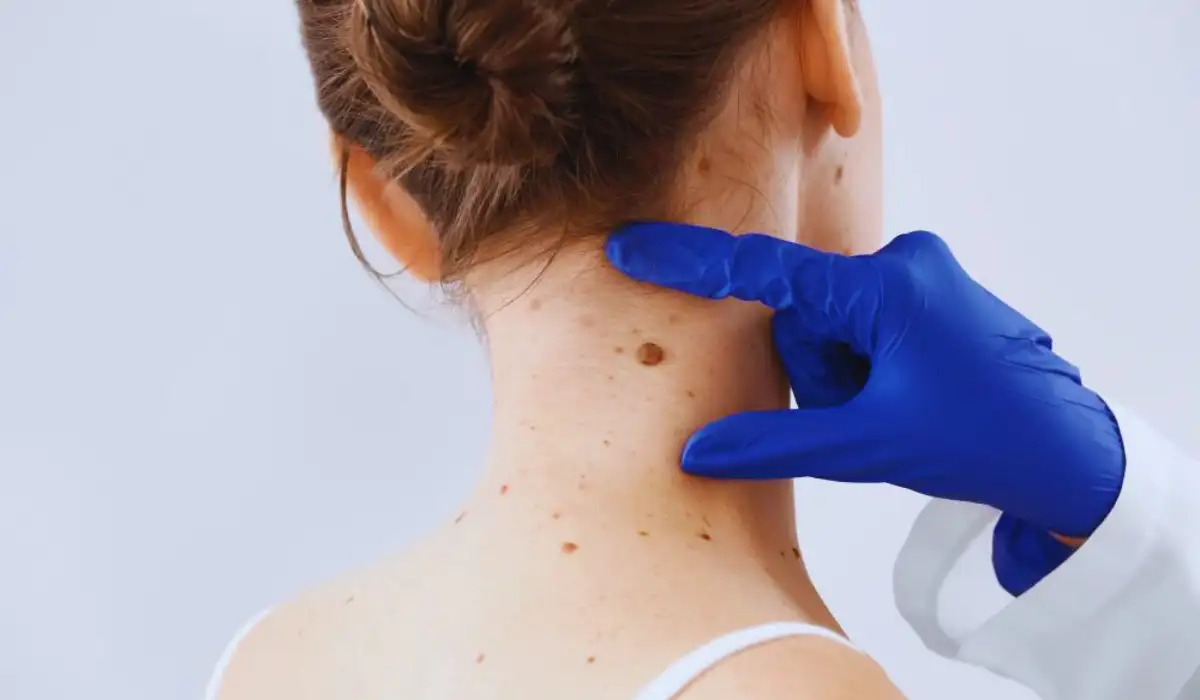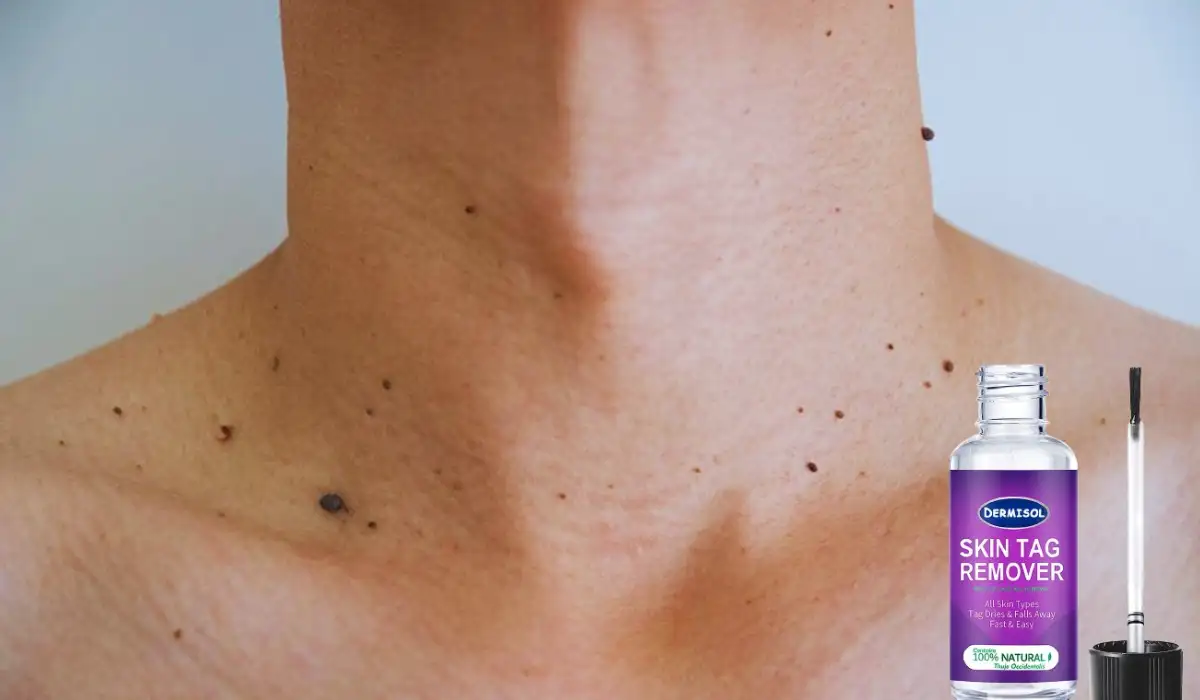Skin tags are growths that hang on the skin; in medical language, it is often referred to as ‘acrochordons’. They are normally in the size range of 1mm to 1 cm. Skin tags are made of collagen, which is a type of protein and blood vessels around the skin.
Skin tags usually grow in the folds of the skin, the area where the skin rubs together, like armpits, anus, thigh, eyelids, groin, or under the breasts. Skin tags are common, and with growing age, they are more common.
On average, every one out of two adults has skin tags. The skin tags are not painful or discomforting; however, if very rarely, there could be some inflammation and thus, consulting a doctor is crucial.
Curious about the effectiveness of skin tag remover liquids? Dive into this exploration where we dissect the efficacy, benefits, and considerations surrounding skin tag removal liquids.
Are skin tags a problem?
The skin tags are not painful but then they look bad. Especially if someone is conscious about looks then removing the wart is a good decision. At times, the tags rub on jewelry or clothes, and then they could get painful or start to bleed.

Skin tags are different from warts and other benign skin lesions as it is a small stalk that attaches them to the skin. Warts are flat and the skin tags hang from the skin.
Staying a little cautious is vital. If you observe some new spots or growth in your skin, then it is vital to visit the doctor. It could signify any underlying skin condition or skin cancer.
What causes skin tags?
The exact reason that causes skin tags is unknown. However, lifestyle and genetic reasons could cause it. However, at times, no reason that could lead to skin tags. Insulin resistance and human papillomavirus (HPV) can also cause skin tags. A Few health conditions could lead to skin tags, like:
- Overweight and obesity
- Diabetes
- Pregnancy, however, disappears after the birth.
How are the skin tags diagnosed?
The doctor will diagnose the skin tag by asking a few questions and physically examining the tags. There is no need for scans or medical tests for skin tags.
How to remove skin tags?
Although there is no need to remove the skin tag, still there are ways to remove them. There are medical ways to remove the skin tags.
The doctor can remove skin tags by cutting them with a scalpel or surgical scissors. Another way is either burning it with electrical energy or freezing it with liquid nitrogen.
Depending on the body part the doctor will recommend if a dermatologist is required or not. A dermatologist depending on the size, location, and nature of the skin tag will use any of the following methods:
- Radiocautery: it involves the passing of high-frequency radio waves through soft tissue to remove it.
- Cauterization: it involves burning the skin tag, and after a few sittings, the tags fall off.
- Cryotherapy: involves applying liquid nitrogen to freeze the tag and in one or two sittings, the tag falls.
- Ligation: a surgical thread is tied around the tag to reduce the blood flow and then the tag eventually falls off.
- Excision: with a blade the tag is removed. If the tag is small and there is no bleeding the area will heal. Otherwise, it may require some additional care.
Home remedies to remove skin tags?
Apart from visiting the doctor, some home remedies can help in removing the skin tags. The medicines are available without a prescription and are safe to use at home.
In some instances, home remedies should be avoided as they could cause scarring, rupture of blood vessels, or the skin tag in a sensitive area like around the eyes or genitals.
Even if the skin tag is too big or painful, visiting a doctor is recommended. However, the home remedies to remove skin tags are as follows,
Apple cider vinegar
Apple cider vinegar can help remove skin tags. Soak a cotton ball in the apple cider vinegar liquid, and with the help of a bandage, place it on the skin tag.
In a day, change the bandage two to three times. On some days, the skin tag will fall. However, if the vinegar irritates then it should not be used.
Liquid iodine
Liquid iodine is very effective in removing skin tags. The method to use is very simple but requires extreme care.
Firstly, cover the surrounding skin with petroleum jelly, and then only on the skin tag apply liquid iodine with the help of a Q-tip. The tag should then be covered with a bandage till the skin tag falls off.
Tea tree oil
Tea tree essential oil is a very beneficial essential oil that helps in treating several skin diseases. Apply the oil to a cotton ball and affix it to the tag.
Repeat the process for a few days and make sure that the cotton ball always has essential oil on it. In a few days, the skin tag will come off.
Spinach juice
In Ayurveda or some ancient civilizations, spinach juice was used to remove the skin tags. With the help of a cotton ball and bandage apply the spinach juice to the tag.
Let it stay for a few days and in some time the tag will be off. Apply the spinach juice which is freshly made from clean leaves. Also, the process should be done three to four times a day for better and faster results.
Also Read: Skin Tag Removal: 3 Effective Methods And Natural Remedies
Conclusion
Skin tags cannot be fully prevented. However, maintaining a healthy weight and exercising can prevent the chances of having skin tags.
Additionally, if a person has too many skin tags, it could indicate that the blood has too much insulin. Thus, in such cases visiting a doctor and getting a type 2 diabetes test becomes mandatory.
A skin tag looks like a tiny, harmless extended part of the skin, but then it indicates an underlying health condition. Never ignore the small signals that the body sends and acting immediately will help in the long run.
The effectiveness of skin tag remover liquids can vary from person to person. While some individuals may experience successful removal of skin tags with these products, others might not achieve the desired results.
It’s essential to follow the instructions carefully and consider consulting a dermatologist for personalized advice.

